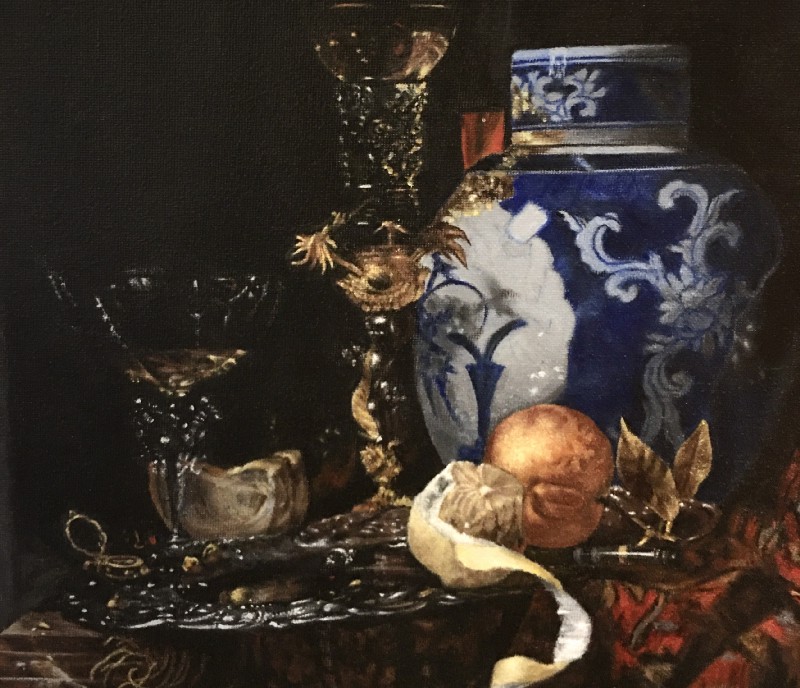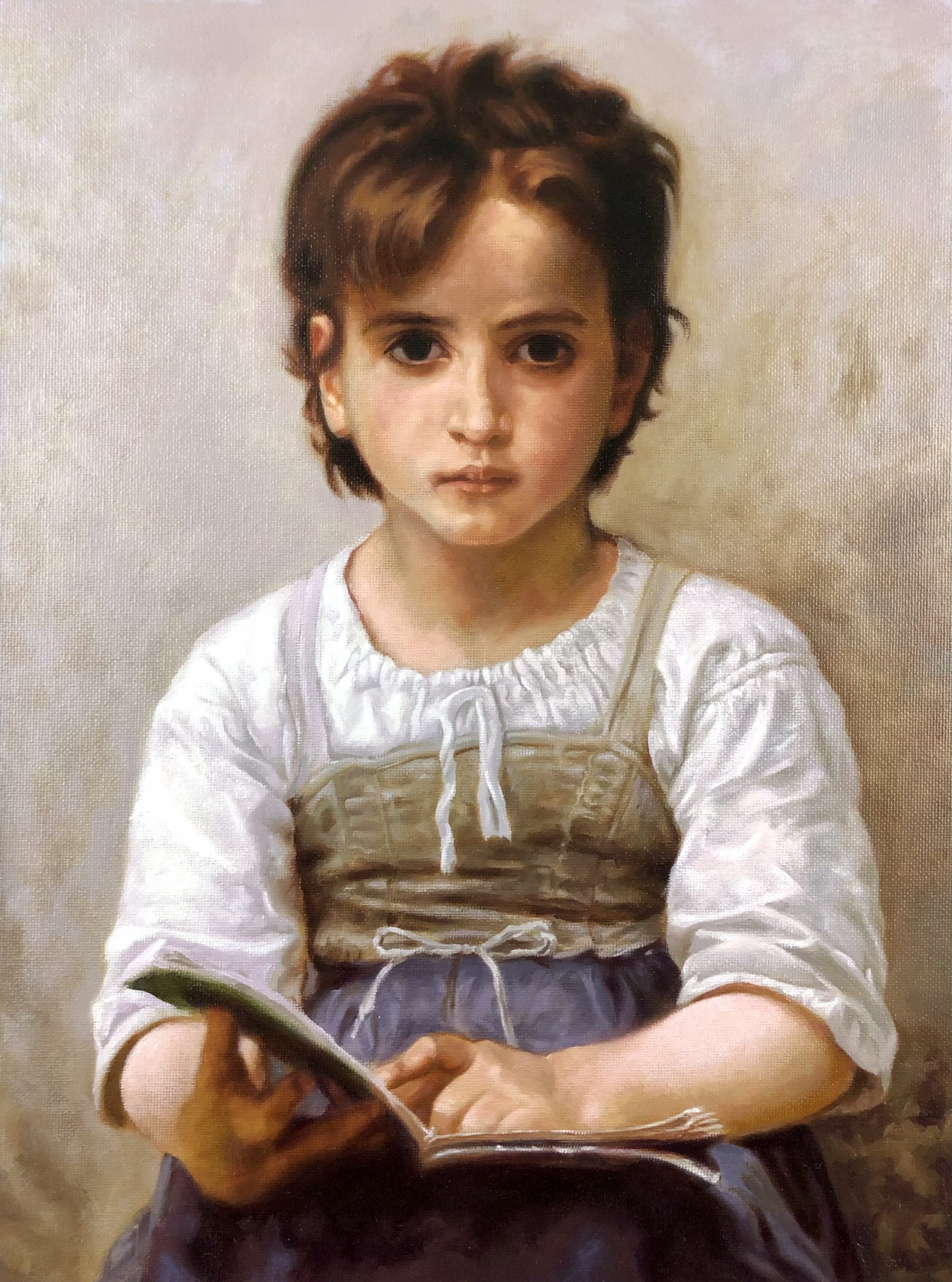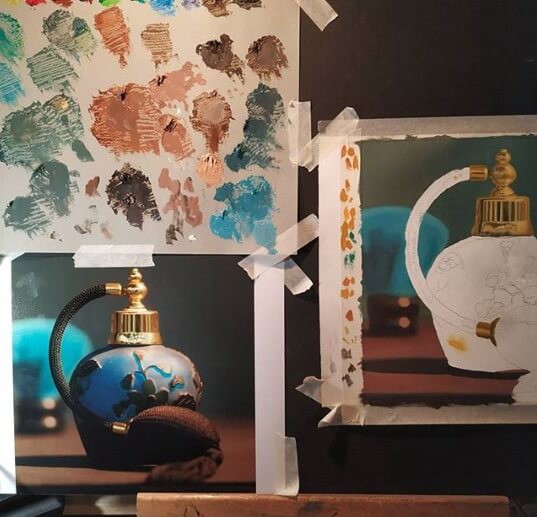
Copying a painting is essential for education. A master copy of the painting “Still Life with a Late Ming Ginger Jar” by Willem Kalf, painted by Evolve student Jan M.
Long before he became a master of illustration and portraiture, Evolve Founder and artist Kevin Murphy spent his childhood and teenage years copying a painting from one artist or another. Fantasy and bodybuilding magazines were ripped up and reimagined to make original artwork.
This experience of borrowing from other artists was an important education. Eventually, a fascination with other artists’ work led to a remarkable career in illustration. However, none of this could have come about if copying painting from another artist had not inspired his own, original work.
Copying a painting is a powerful learning tool for beginning artists. Of course, care and thought are necessary to deter plagiarism, which always prevents original ideas from forming.
Ideally, the goal behind copying a painting or borrowing from other artists is to develop your own unique style and expression. And the longer you paint, the more your style will emerge.

A copy of a Van Dyck Painting by Daniel Folta
Copying a Painting like a Master
Copying a painting is a great tradition. And, if you are copying the right art, there is a world of information to glean. Historically, students of the old masters learned how to paint by working in the style of their teachers.
This process of copying a painting of their master’s work would enable a student to practice a skilled method of painting before having to develop their own approach. Many famous artists employed this practice, such as John Singer Sargent, Edgar Degas, and Pablo Picasso.
Many of these artists' copies hang in collections around the world. They bear the mark of either having been created in the studio or workshop of an artist under supervision, created by someone in the social circle of the original artist or marked as a piece of art done in exact or partial imitation of an original.
So the tradition of the master copy is filled with a rich history and by copying a painting of high quality, students can experience great practice without the strains of original content.
Copying a Painting Teaches Quality Control
Simply viewing a painting rarely gives an artist enough information to learn a new skill. Until you begin to copy a painting you can never fully understand another artist’s technique, color mixtures, or process.
Without copying paintings from master artists, we would have very little idea what their palettes may have looked like.

A Master Copy Painting of “Nicholas Ruts, by Rembrandt” by Evolve instructor Dimitrios Miliotis
For example, when looking at a Bouguereau painting, the result looks quite gray or brown.
But when you begin to mix the colors to mimic the painting, gray or brown exists in very few, if any, areas. Simply by looking you would never understand this.
By actually mixing the paint yourself, you can see how the effect came about in the original painting.
Copying can also change your quality control. Following a master’s painting forces your hand to produce higher quality in order to have a successful painting.
A faithful copy forces you to make marks that you may not make on your own. When you have an appreciation for a style, a mark for mark match will ensure that you become more critical of what you see and do.
Any professional work, either old masters or a contemporary piece, that you choose to copy will slightly force you to make their style yours. And this is an excellent educational tool for trying new things and developing your own, unique style.

Evolve student, Michael Boehl's copy of a Velázquez, The Waterseller of Seville.
See What Other Artists See by Copying a Painting
One of the additional benefits of copying a painting is that the original painting has already made the shift in dimension for you. Looking at a person and painting them means that an artist must take a three-dimensional being and translate it into a flat, two-dimensional painting.
The benefit for a student seeking to copy work lies in the fact that the shift in dimension has already happened. Even if you work from a photograph you must still attempt to translate something onto a flat surface.
“[Copying] provides learning through experience and learning through the eyes of an accomplished and successful artist”
However, when you copy from a finished painting, you have a translated image in front of you. An established artist has already translated the subject or photograph into a two-dimensional painting and breathed back in a feeling of a third dimension. Now you simply replicate what you see, what they saw, and how they processed it.
This is a huge educational benefit for any artist. It provides learning through experience and learning through the eyes of an accomplished and successful artist. And if you enjoy their style and effect, you can begin to incorporate that into your own work.
Skilled artists bring life into their subjects, and by copying a painting, you can develop skills on how to go forward when you tackle your next painting.

Copying art, in the form of photographs and paintings, can help you to grow as an artist. Credit: Evolve Artist.
Developing Personal Style
There is a world of information to be learned by copying a painting. However, the idea is that you do not want to copy style continuously.
When an artist begins to consistently take the style of another artist and make that their personal style, it becomes both infringement and plagiarism.
Let your style be your own. Personal style in art is not something you can force. Style happens when you paint what you love painting.
If you love to paint flowers, then copy an artist who creates floral paintings in a way that you love. Then begin to try new things, use things you’ve learned from other artists, and begin to develop a unique voice. The longer you paint, the more hours you put in, the more your style will emerge.
Art is about expression. So let your art express you.
FREE MASTERCLASS:
The 4 Part Framework to Develop Artistic Excellence in 12 Months
